Report 4th International Symposium on Outfall Systems
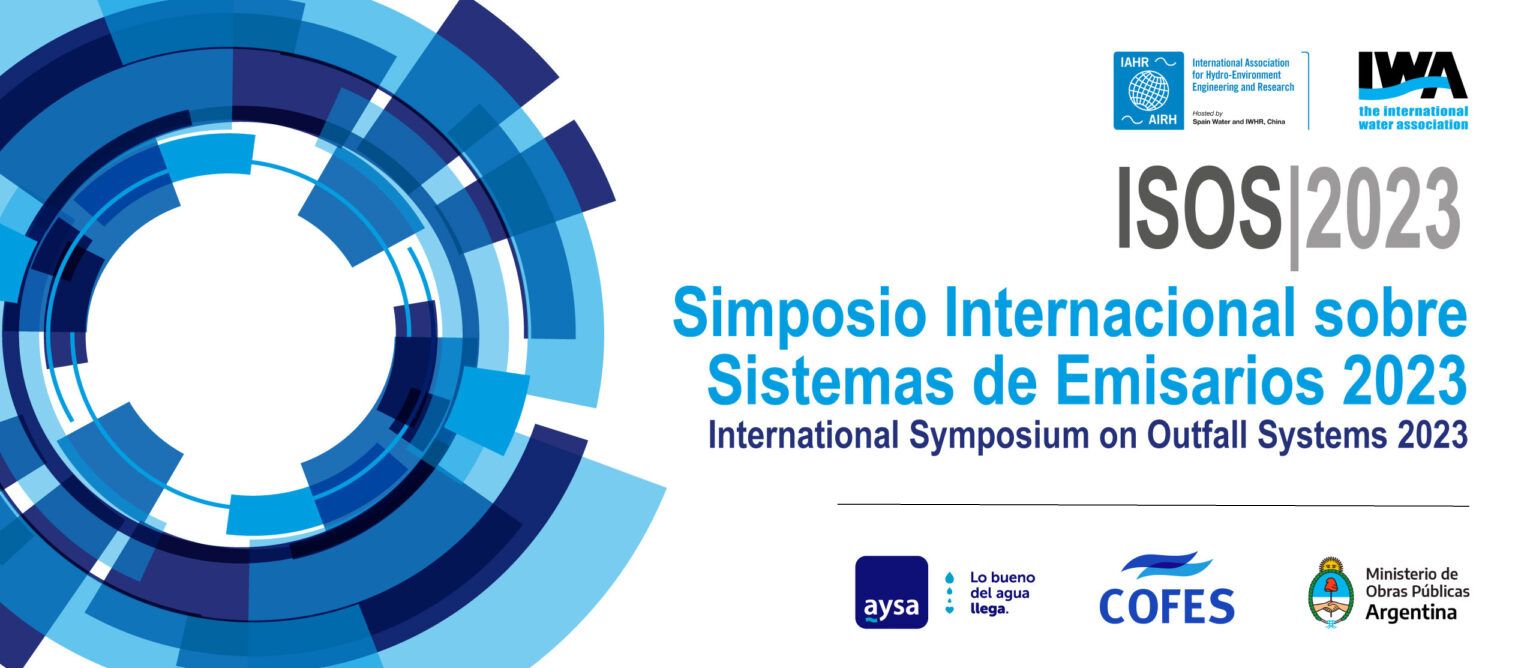
The 4th International Symposium on Outfall Systems (ISOS 2023) was organized by the IAHR/IWA Joint Committee on Marine Outfall Systems, the Argentinian Federal Council of Sanitation System Entities (COFES) and Argentinian Water and Sanitation S.A (AySA). ISOS 2023 aimed to bring together leading experts in the fields of water resources, sanitation, hydraulics, water management, oceanography, biology, coastal and environmental engineering to exchange knowledge and discuss current technology, design and management issues relating to effluent discharges into coastal waters, rivers, and estuaries. The symposiums objective was to discuss the outfall system within its role combining wastewater treatment and reuse options and required environmental protection needs.
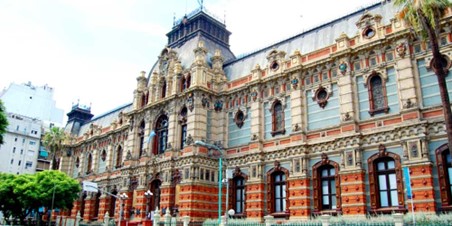
Venue: El Palacio de las Aguas Corrientes, Buenos Aires, Argentina
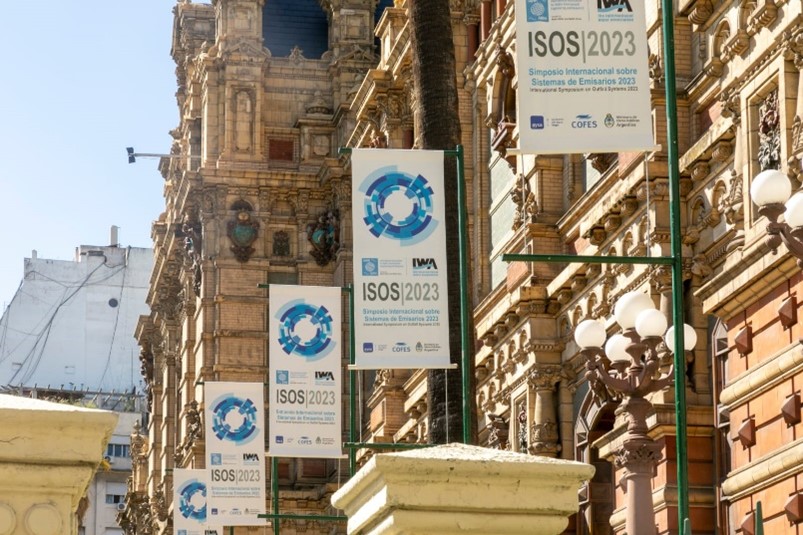 Palace decorated with Symposiums announcement
Palace decorated with Symposiums announcement
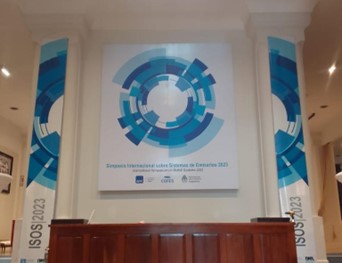
Entrance Hall with ISOS Logos
Opening Ceremony
ISOS was opened by:
Malena Galmarini. President AySA (Agua y Saneamientos Argentinos SA)
José Luis Lingeri. Secretary General SGBATOS (Sindicato Gran Buenos Aires de Trabajadores de Obras Sanitarias)
Fernando Calatroni. General Technical Director AySA (Agua y Saneamientos Argentinos SA)
Alejandro Barrio. Technical Director and Technical Development AySA (Agua y Saneamientos Argentinos SA), President COFES (Consejo Federal de Entidades de Servicios Sanitarios).
Tobias Bleninger. Federal University of Paraná, Brazil
Marcelo Scagliola. Quality Engineer OSSE, (Obras Sanitarias Mar del Plata S.E.), Vicepresident COFES (Consejo Federal de Entidades de Servicios Sanitarios).
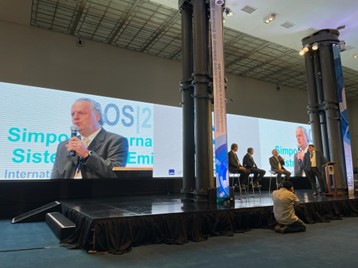
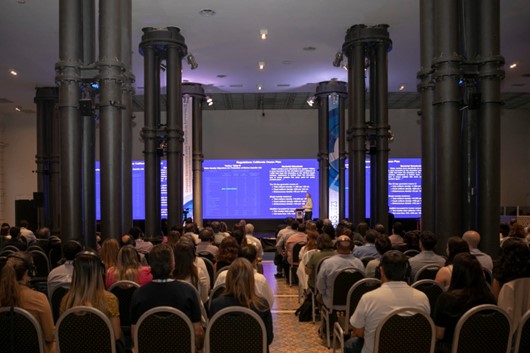
Opening Ceremony in the old water storage building of Buenos Aires
Keynote Speakers
The symposia program had a total of 15 oral presentations and in total 281 participants. Keynotes were offered by selected international experts:
Tobías Bleninger. Outfall modelling for mixing zon definition
Fabián Bombardelli. Numerical modeling of flow past hydraulic structures using turbulence hybrid closures
Philip Roberts. Seawater Intrusion in Long Outfalls
Majid Mohammedian. Advances in simulation of outfall systems
Walter Frick. On Initiatives to Maintain and Advance the Visual Plumes Modeling Application
Edward Eric Adams. Plunging Liquid Jet Reactors for Dilution and Aeration of Brine Discharges
Claudia Condé Lamparelli. Assesing Environmental Impacts of Sea Outfall Systems
Alexandre Trevisan. Social restrictions on outfall solutions.
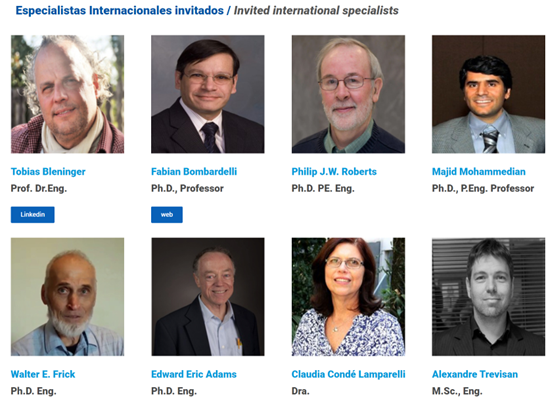
Themes
The program covered the following themes:
Materials and construction of outfalls
Environmental impacts of outfalls (assessment and mitigation). Water and sediment quality.
Biological assessments of discharges (biological sciences, public health risk assessments)
Methods for estimation of near field and far-field mixing and pollutant dispersion
Experimental techniques and laboratory studies
Computational techniques (CFD)
Intake/outfall systems for industrial applications (cooling water, desalination brine, …)
Coastal-zone or river-basin management with outfall systems
Field measurement techniques and monitoring of outfall systems (onsite, remote sensing, modeling, combined)
Outfalls in rivers.
Detection and fate of Sars Cov 2 virus in wastewater and outfall systems.
Ecologically friendly outfall structures (Building-with-Nature)
Discharge regulations and outfall investigations, including monitoring and compliance
Outfall perception, decision processes, treatment and outfall location trade-offs, community/society and culture of indigenous groups
Case studies Rio de la Plata and worldwide
Technical visit
The main highlight of ISOS was the visit to the construction site of one of the worlds largest outfalls, currently built at the margins of the Rio de la Plata in the City of Buenos Aires. This Megaproject (ca. 1,000 millions USD) will provide treatment and proper disposal for around 700,000 inhabitants.
Sponsorship
ISOS would have not been possible without the support from the sponsors. Even though the main hosting institution AySA required to finance 20 % of the symposiums cost (in form of granting reduced or free inscriptions), as the Argentina financial crisis resulted in a very low number of paying delegates:
International Bank of Development (IBD)
World Bank Group (WB)
Banco de Desarrollo de América Latina (CAF)
Ghella
Fisia Acciona
Coarco SA
Jenck SA
Rurhpumpen
Queiros Galvao Rovella Carranza Utemisario Berazategui (EMISARIOS)
Pini Group (cadia, geodata)
WeBuild
Brazilian Association of Water Resources (ABRHidro)

Organising committees
Symposium Chair: Alejandro Barrio, Argentinian Water and Sanitation Company (AySA), COFES, Argentina
Co-chair: Tobias Bleninger, Federal University of Paraná (UFPR), Brazil
Co-chair: Marcelo Scagliola, Mar del Plata Public Works (OSSE), COFES, Argentina

Local Organizing Committee (LOC)
Chair: Alejandro Barrio, Argentinian Water and Sanitation Company (AySA), COFES, Argentina
Co-chair: Marcelo Scagliola, Mar del Plata Public Works (OSSE), COFES, Argentina
Nora Mendiguru, COFES, Argentina
Gonzalo Meschengieser, Argentinian Water and Sanitation Company (AySA), Argentina
Mayra Mariani, Argentinian Water and Sanitation Company (AySA), Argentina
Marcela Alvarez, Argentinian Water and Sanitation Company (AySA), Argentina
Sebastian Canellas, Argentinian Water and Sanitation Company (AySA), Argentina
Veronica Borro, Argentinian Water and Sanitation Company (AySA), Argentina
Paula Salvio, Argentinian Water and Sanitation Company (AySA), Argentina
Dolores Flores Piran, Argentinian Water and Sanitation Company (AySA), Argentina
Juan E Vander Horden, Argentinian Water and Sanitation Company (AySA), Argentina
Ana Paula Comino, Mar del Plata Public Works (OSSE), COFES, Argentina
Scientific Organizing Committee (SOC)
Chair: Philip Roberts – Georgia Tech, USA
Co-chair: Robin Morelissen – Deltares, Netherlands
Co-Chair: Majid Mohammadian – University of Ottawa, Canada
Co-chair: Matthew Wood – HR Wallingford, UK
Ozeair Abessi - Babol Noshirvani University of Technology, Iran
Eric Adams - MIT, USA
Alejandro Barrio - Agua y Saneamientos Argentinos, Argentina
Mitchell Baum - BMT, Australia
Ed Beling - Intrawater, Australia
Tobias Bleninger - UFPR, Brazil
Daniel Botelho - BMT, Australia
Diego Bottelli - Agua y Saneamientos Argentinos, Argentina
Jim Bradley - Stantec, New Zealand
Adrian Law - Nanyang Technological University, Singapore
Angel Menendez - Universidad de Buenos Aires, Argentina
Brett Miller - University of New South Wales, Australia
Dongdong Shao - Beijing Normal University, China
Scott Socolofsky - Texas A&M University, USA
Eduardo Yassuda - Tetratech, Brazil
Lais Ferrer Amorim de Oliveria – University of São Paulo, Brazil
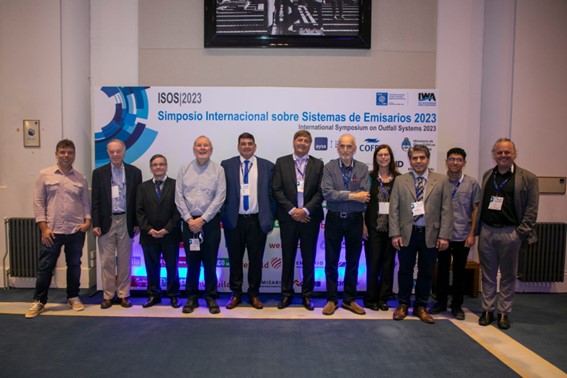
IWA and IAHR Support
The support provided by IWA and IAHR were always on time and professional and allowed for a good international visibility and credibility. Even though the participation from outside Latin America was very limited. Probably due to various reasons, such as being hold right after COVID-19 pandemic, being hold far away in difficult financial times. The organizers such recommend to improve to plan more internationally together with IWA and IAHR for the next conference, if hold on Latin-America.
The following meeting of the IAHR/IWA Joint Committee on Marine Outfall Systems evaluated the symposium and summarized that: all presentations and papers were of high quality, and the visit to the construction site, together with national and international experts, was considered a highlight. Largest deficiencies was the very low participation from international IWA and IAHR delegates. The committee acknowledged the tremendous efforts from aysa and COFES to make ISOS happening, as after first registration rounds we were close to cancel everything due to large potential budget problems. Aysa and COFES however took the risk, and in last minute actions could reduce the deficits to an acceptable amount, by getting support from sponsors.
The committee decided to have another symposium in that line, however after a call for proposals.